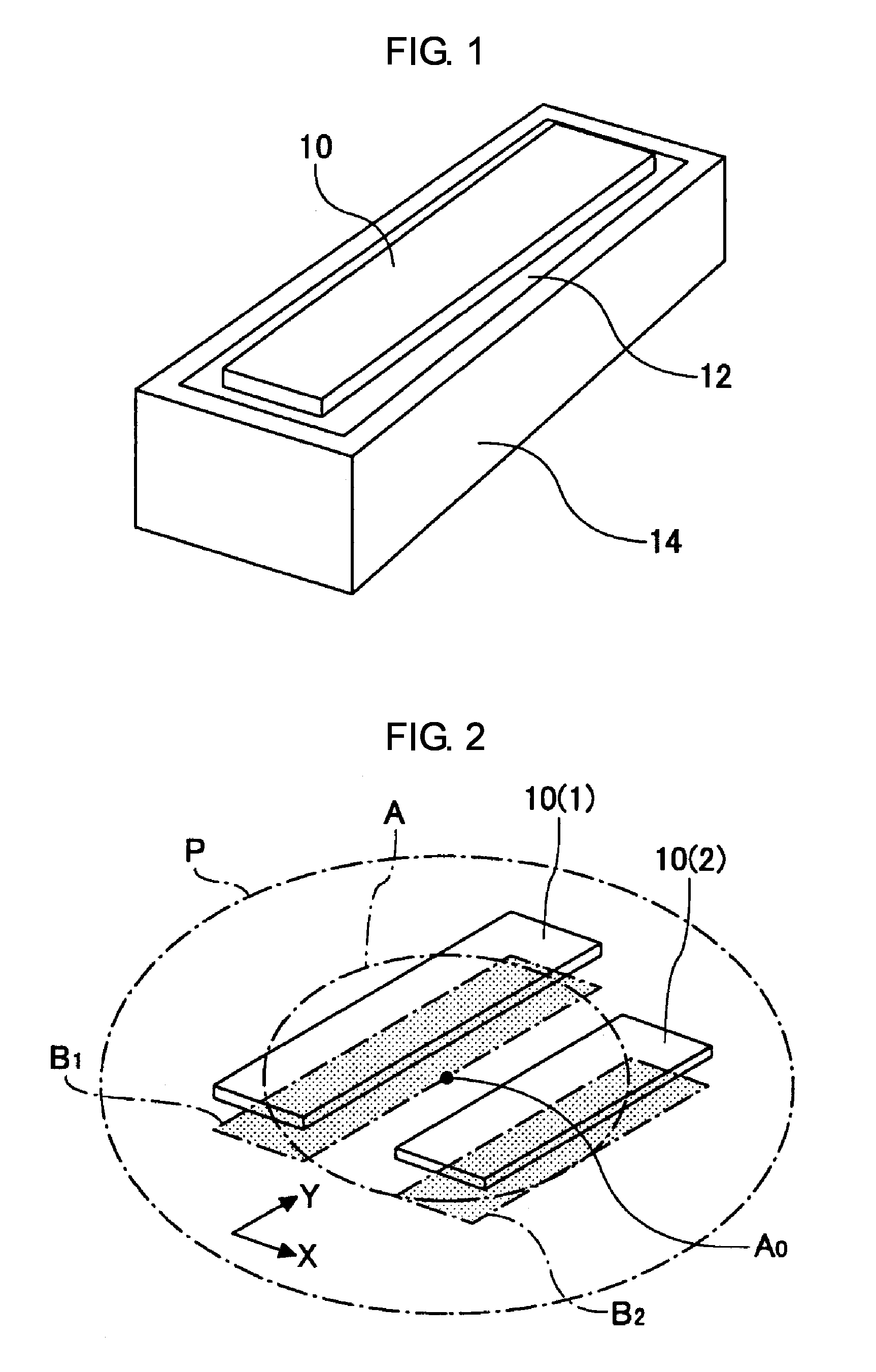Magnetron sputtering method, and magnetron sputtering apparatus
a sputtering apparatus and magnetron technology, applied in the direction of electrolysis components, vacuum evaporation coatings, coatings, etc., can solve the problems of low target utilization efficiency and poor uniformity of sputter film formation, and achieve efficient and uniform
- Summary
- Abstract
- Description
- Claims
- Application Information
AI Technical Summary
Benefits of technology
Problems solved by technology
Method used
Image
Examples
embodiment 1
[0098](Embodiment 1)
[0099]FIG. 3 shows a positional relationship between the wafer W and the portions A, B1, and B2 on the wafer arrangement surface P in Embodiment 1 of the present invention. In the present embodiment, the wafer W on which a film is to be deposited exactly overlaps with the circular reference region A on the wafer arrangement surface P. Also, the wafer W rotates at a predetermined rotation speed around the center Ao of the circular reference region A. Due to the rotation, a wafer central portion of the wafer W inner than a radius R / 2 is exposed to the sputtering particles from the thin and long target 10(1) only while the wafer central portion passes through the thin and long deposition region B1, and a wafer outer half region of the wafer W outer than the radius R / 2 is exposed to the sputtering particles from the thin and long targets 10(1) and 10(2) while the wafer outer half region passes through the thin and long deposition regions B1 and B2. Also, the wafer ce...
embodiment 2
[0112](Embodiment 2)
[0113]Next, Embodiment 2 of the present invention where requirements for a high degree of precision in a positional relationship between the rectangular targets 10(1) and 10(2) and the wafer W are relatively reduced when compared with Embodiment 1 will be explained.
[0114]Embodiment 2 is almost the same as Embodiment 1 except that the wafer W is disposed on the wafer arrangement surface P such that a center Wo of the wafer W is spaced apart by a predetermined distance a from the center Ao of the circular reference region A and the wafer W is rotated around the center Ao of the circular reference region A.
[0115]FIGS. 10 through 13 each show a positional relationship between the wafer W and the circular reference region A and the thin and long deposition regions B1 and B2 for every ¼)(90°-rotation of the wafer W in Embodiment 2.
[0116]FIG. 10 shows a positional relationship when the wafer W is most deviated in a +X direction (rightward in FIG. 10) due to the rotation...
embodiment 3
[0123](Embodiment 3)
[0124]Embodiment 3 of the present invention will now be explained with reference to FIGS. 16 through 18.
[0125]In Embodiment 3, as shown in FIG. 16, three thin and long deposition regions B1, B2, and B3 are set on the wafer arrangement surface P. The thin and long deposition regions B1, B2, and B3 are arranged in parallel at predetermined intervals in the X direction, and each cross the circular reference region A in the Y direction.
[0126]The thin and long deposition region B1 is disposed such that in a left region of the circular reference region A, a side in a +X direction (right side in FIG. 16) of the thin and long deposition region B1 passes through the center Ao of the circular reference region A. Also, the thin and long deposition region B3 is disposed such that in the left region of the circular reference region A, a side in a −X direction (left side in FIG. 16) of the thin and long deposition region B3 passes through edges of the circular reference region...
PUM
| Property | Measurement | Unit |
|---|---|---|
| Diameter | aaaaa | aaaaa |
| Diameter | aaaaa | aaaaa |
| Diameter | aaaaa | aaaaa |
Abstract
Description
Claims
Application Information
 Login to View More
Login to View More - R&D
- Intellectual Property
- Life Sciences
- Materials
- Tech Scout
- Unparalleled Data Quality
- Higher Quality Content
- 60% Fewer Hallucinations
Browse by: Latest US Patents, China's latest patents, Technical Efficacy Thesaurus, Application Domain, Technology Topic, Popular Technical Reports.
© 2025 PatSnap. All rights reserved.Legal|Privacy policy|Modern Slavery Act Transparency Statement|Sitemap|About US| Contact US: help@patsnap.com



